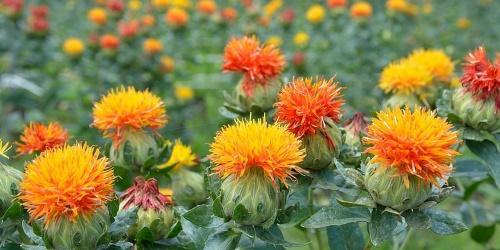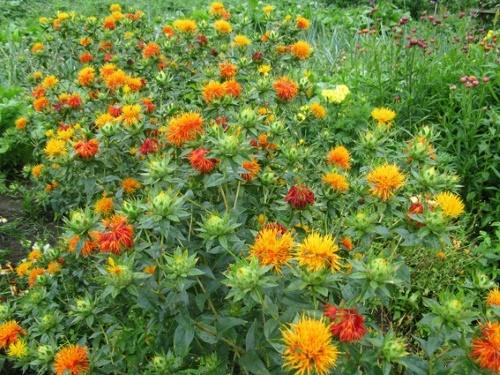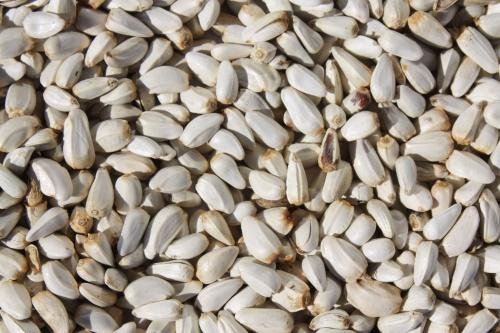What is safflower and what it looks like: a unique weed with beneficial properties
 There are some plants that we consider weeds and diligently try to remove them from the site. Take, for example, safflower, which is popularly called the budyak. But if you knew what safflower is and what it looks like, and what power it has, this culture would definitely settle in your garden. How does it differ from other weeds and what is special about it?
There are some plants that we consider weeds and diligently try to remove them from the site. Take, for example, safflower, which is popularly called the budyak. But if you knew what safflower is and what it looks like, and what power it has, this culture would definitely settle in your garden. How does it differ from other weeds and what is special about it?
What is safflower and what does it look like

The bush blooms in early summer, dissolving not very large inflorescences, similar to round balls. Their tops are crowned with a fluffy pom-pom of narrow long brightly colored petals. Most often they are yellow or dark orange. Flowering lasts until early autumn.
Safflower has many names, including American thistle, and wild saffron.
 In total, there are more than 20 species of safflower in nature, but most of them are really malicious weeds. As a cultivated plant grown only safflower. It has medicinal properties and also has a wide range of applications. It grows mainly in the southern strip, because it loves warmth and light. In general, plantings can tolerate slight frosts, but the crop needs a warm summer to ripen the seeds.
In total, there are more than 20 species of safflower in nature, but most of them are really malicious weeds. As a cultivated plant grown only safflower. It has medicinal properties and also has a wide range of applications. It grows mainly in the southern strip, because it loves warmth and light. In general, plantings can tolerate slight frosts, but the crop needs a warm summer to ripen the seeds.
Where is safflower dye used?
 The main purpose of growing a plant is clear from the name: its flowers are used as a dye for many materials. Safflower fruits, similar to white seeds, are no less useful. They make butter, which is no worse than sunflower oil. It is considered a dietary product. Safflower oil is also widely used for cosmetic purposes. Safflower seeds and oil cake are also nutritious food for animals and poultry from a subsidiary farm.
The main purpose of growing a plant is clear from the name: its flowers are used as a dye for many materials. Safflower fruits, similar to white seeds, are no less useful. They make butter, which is no worse than sunflower oil. It is considered a dietary product. Safflower oil is also widely used for cosmetic purposes. Safflower seeds and oil cake are also nutritious food for animals and poultry from a subsidiary farm.
The flowers of the plant are also useful in other industries. So, safflower is used as a honey plant, and honey from it has healing properties. And also inflorescences and leaves are brewed and used for various diseases.
Useful properties of safflower
 This unique plant has a number of medicinal properties. Decoctions and tinctures of safflower have a beneficial effect on the body, namely:
This unique plant has a number of medicinal properties. Decoctions and tinctures of safflower have a beneficial effect on the body, namely:
- relieve inflammation;
- soothe and tone;
- lower cholesterol and blood pressure;
- acts as an antiemetic and diuretic;
- normalize the menstrual cycle;
- kill pathogenic bacteria.